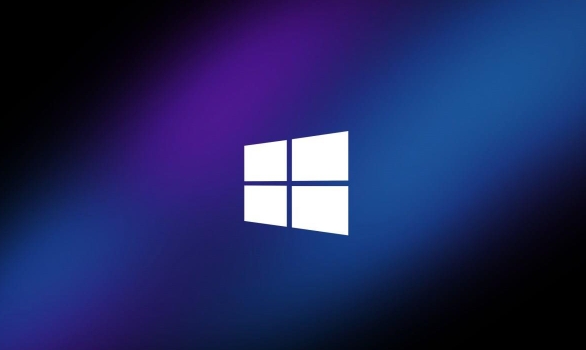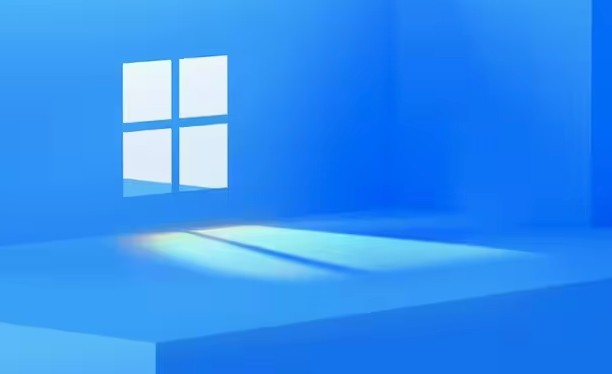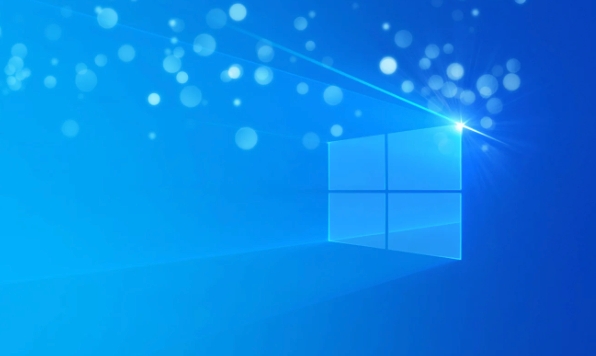Why is my Windows PC not connecting to Wi-Fi
Jul 07, 2025 am 02:28 AMYour Windows PC might not connect to Wi-Fi due to signal issues, driver problems, or network settings. 1. Check basics like Wi-Fi toggle, router status, and other devices’ connectivity. 2. Restart your PC and router. 3. Inspect network adapters via Device Manager for driver issues and update or reinstall them if needed. 4. Forget the network in settings and reconnect with the correct password. 5. Run the built-in network troubleshooter. 6. Use Command Prompt to release and renew IP address and reset TCP/IP. 7. Temporarily disable firewalls or antivirus tools that may block connections. 8. Adjust router Wi-Fi channel to avoid interference. 9. Ensure hardware supports current Wi-Fi standards and is undamaged. Following these steps should resolve most connection issues.

Your Windows PC might not be connecting to Wi-Fi due to a variety of reasons, ranging from simple signal issues to more technical problems like driver conflicts or network settings. Before jumping into complicated fixes, start by checking the basics—like whether Wi-Fi is actually turned on and if other devices can connect to the same network.

Check Your Wi-Fi Connection Basics
Before diving into advanced troubleshooting, rule out the most obvious causes. Sometimes the issue is as simple as a misconfigured setting or a router that’s temporarily down.

- Make sure your Wi-Fi is enabled. On laptops, there's often a function key (like Fn F2 or another F key) to toggle it on or off.
- Restart both your PC and your router. This clears temporary glitches in both devices.
- Check if other devices can connect to the same Wi-Fi. If they can’t, the problem may lie with your internet service or router, not your PC.
If everything looks fine on the hardware side and only your PC has trouble, move on to software-related checks.
Look at Network Adapter and Driver Issues
Windows relies on drivers to communicate with your PC’s hardware, including the Wi-Fi adapter. Outdated, missing, or corrupted drivers are common culprits when you can't connect.

You can check the status of your network adapters through Device Manager:
- Press
Win Xand select Device Manager. - Expand Network adapters and look for any yellow exclamation marks.
- Right-click the wireless adapter and choose Update driver.
- Alternatively, you can uninstall the driver and let Windows reinstall it automatically after a restart.
Also, make sure the Wi-Fi adapter isn’t disabled in Device Manager or through power-saving settings. Some systems turn it off to save energy when not in use.
Review Network Settings and Profiles
Sometimes Windows saves network profiles that become outdated or conflicting, especially if you've connected and disconnected multiple times or changed routers.
Try these steps:
- Go to Settings > Network & Internet > Wi-Fi, then click Manage known networks.
- Select your network and click Forget.
- Reconnect by selecting the network again and entering the password.
If that doesn’t work, run the built-in network troubleshooter:
- Go to Settings > System > Troubleshoot.
- Run the Internet Connections troubleshooter to detect and fix issues automatically.
In some cases, manually resetting TCP/IP or renewing your IP address via Command Prompt can also help:
- Open Command Prompt as administrator.
- Type
ipconfig /releaseand press Enter. - Then type
ipconfig /renewand press Enter. - Follow up with
netsh winsock resetandnetsh int ip reset.
Watch for Common Hidden Traps
Some issues aren’t immediately obvious. For example, certain security software or firewall settings can block connections without clear warnings. Try temporarily disabling third-party antivirus or firewall tools to see if that resolves the issue.
Another sneaky problem: channel interference. If you're in an apartment or crowded area, many nearby Wi-Fi networks might be using the same channel, causing instability. You can change your router’s Wi-Fi channel through its admin panel, usually accessible via a browser.
Also, don’t overlook physical damage or compatibility issues. Older PCs might struggle with newer Wi-Fi standards like Wi-Fi 6 unless the adapter supports them.
That’s about it. There are several layers to this problem, but most of the time, one of these steps should get you back online.
The above is the detailed content of Why is my Windows PC not connecting to Wi-Fi. For more information, please follow other related articles on the PHP Chinese website!

Hot AI Tools

Undress AI Tool
Undress images for free

Undresser.AI Undress
AI-powered app for creating realistic nude photos

AI Clothes Remover
Online AI tool for removing clothes from photos.

Clothoff.io
AI clothes remover

Video Face Swap
Swap faces in any video effortlessly with our completely free AI face swap tool!

Hot Article

Hot Tools

Notepad++7.3.1
Easy-to-use and free code editor

SublimeText3 Chinese version
Chinese version, very easy to use

Zend Studio 13.0.1
Powerful PHP integrated development environment

Dreamweaver CS6
Visual web development tools

SublimeText3 Mac version
God-level code editing software (SublimeText3)
 How to change the system display language for all users in Windows
Jul 31, 2025 am 08:18 AM
How to change the system display language for all users in Windows
Jul 31, 2025 am 08:18 AM
InstallthedesiredlanguagepackviaSettings→Time&Language→Language®ion,ensuring"SetasmyWindowsdisplaylanguage"isselected.2.Changethesystemdisplaylanguageinthesamemenuandrestart.3.OpenControlPanel→Region→Administrativetab,click"
 How to reset the Microsoft Store in Windows
Jul 31, 2025 am 08:23 AM
How to reset the Microsoft Store in Windows
Jul 31, 2025 am 08:23 AM
ResettheMicrosoftStoreviaSettingsbygoingtoApps>Installedapps,selectingMicrosoftStore,clickingAdvancedoptions,thenRepairandResetifneeded.2.Ifthatfails,re-registertheStoreusingPowerShellasadminwiththecommand:Get-AppXPackage-NameMicrosoft.WindowsStor
 How to install Windows on a Mac without Boot Camp
Jul 31, 2025 am 11:58 AM
How to install Windows on a Mac without Boot Camp
Jul 31, 2025 am 11:58 AM
Without BootCamp, installing Windows on Mac is feasible and works for different chips and needs. 1. First check compatibility: The M1/M2 chip Mac cannot use BootCamp, it is recommended to use virtualization tools; the Intel chip Mac can manually create a boot USB disk and install it in partition. 2. Recommended to use virtual machines (VMs) for M1 and above chip users: Windows ISO files, virtualization software (such as ParallelsDesktop or UTM), at least 64GB of free space, and reasonably allocate resources. 3. IntelMac users can manually install it by booting the USB drive: USB drive, WindowsISO, DiskU is required
 How to reset the TCP/IP stack in Windows
Aug 02, 2025 pm 01:25 PM
How to reset the TCP/IP stack in Windows
Aug 02, 2025 pm 01:25 PM
ToresolvenetworkconnectivityissuesinWindows,resettheTCP/IPstackbyfirstopeningCommandPromptasAdministrator,thenrunningthecommandnetshintipreset,andfinallyrestartingyourcomputertoapplychanges;ifissuespersist,optionallyrunnetshwinsockresetandrebootagain
 How to install Windows on a Mac
Jul 31, 2025 am 10:07 AM
How to install Windows on a Mac
Jul 31, 2025 am 10:07 AM
ForIntel-basedMacs,useBootCampAssistanttocreateadual-bootsystemwithWindowsbypreparingaUSBdrive,downloadingaWindowsISO,partitioningthedisk,andinstallingWindowsalongsidemacOSwithsupportdrivers.2.ForAppleSiliconMacs(M1/M2/M3),usevirtualizationsoftwareli
 Step-by-step guide to installing Windows from an ISO file
Aug 01, 2025 am 01:10 AM
Step-by-step guide to installing Windows from an ISO file
Aug 01, 2025 am 01:10 AM
DownloadtheWindowsISOfromMicrosoft’sofficialsite.2.CreateabootableUSBusingMediaCreationToolorRufuswithaUSBdriveofatleast8GB.3.BootfromtheUSBbyaccessingthebootmenuoradjustingBIOS/UEFIsettings.4.InstallWindowsbyselectingcustominstallation,choosingtheco
 How to manage AppLocker policies in Windows
Aug 02, 2025 am 12:13 AM
How to manage AppLocker policies in Windows
Aug 02, 2025 am 12:13 AM
EnableAppLockerviaGroupPolicybyopeninggpedit.msc,navigatingtoApplicationControlPolicies,creatingdefaultrules,andconfiguringruletypes;2.Createcustomrulesusingpublisher,path,orhashconditions,preferringpublisherrulesforsecurityandflexibility;3.Testrules
 A guide to custom Windows installation options
Aug 01, 2025 am 04:48 AM
A guide to custom Windows installation options
Aug 01, 2025 am 04:48 AM
Choose"Custom:InstallWindowsonly(advanced)"forfullcontrol,asitallowsacleaninstallthatremovesoldissuesandoptimizesperformance.2.Duringsetup,managepartitionsbydeletingoldones(afterbackingupdata),creatingnewpartitions,formatting(usingNTFS),ors






